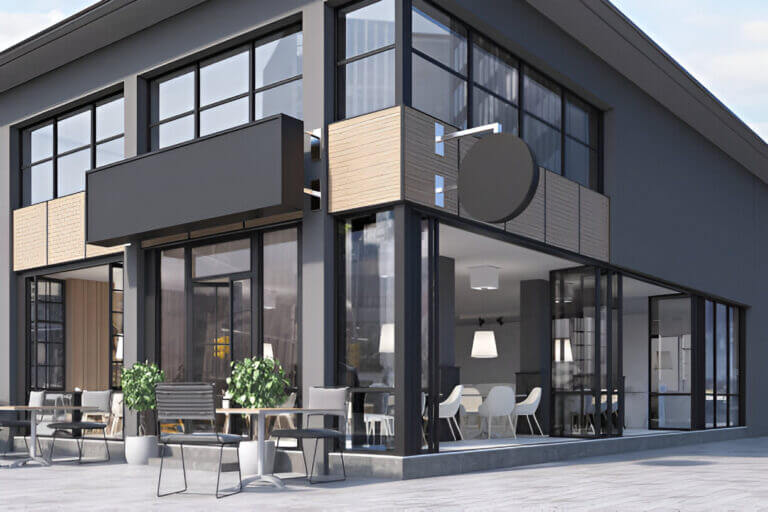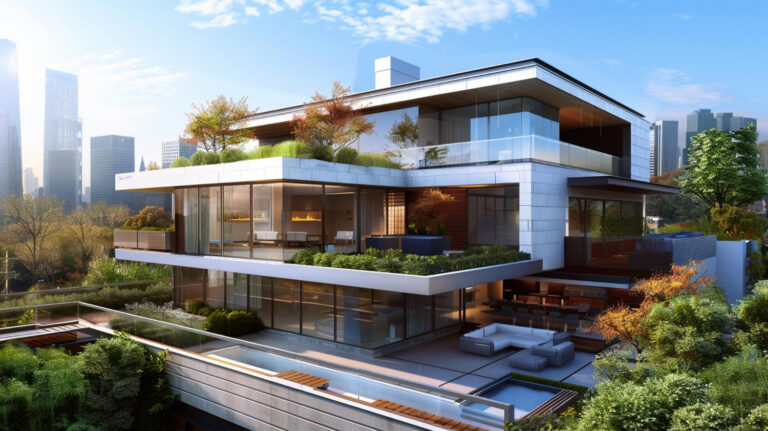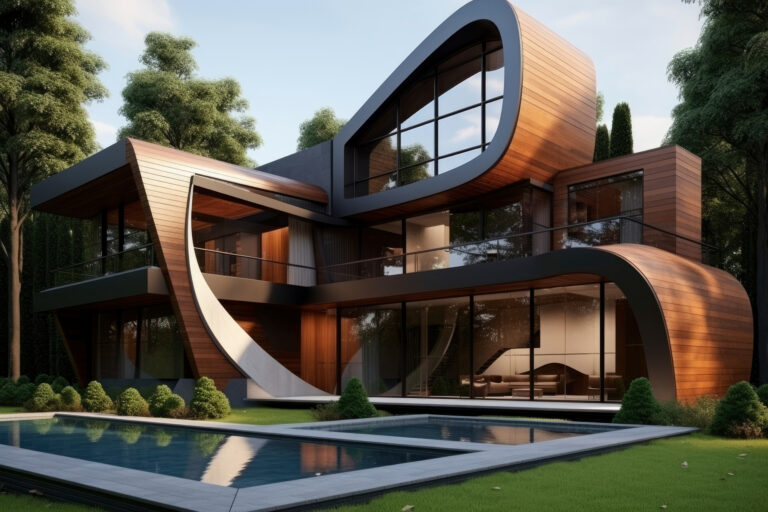Introduction
You may find yourself wading through endless marketing buzzwords, virtual tours, drone footage, AI chatbots and wondering which tactics genuinely move the needle in Real Estate Marketing.
It’s tempting to stick with tried-and-true strategies: print brochures, static photos, and open houses. Yet somewhere in the back of your mind, you question whether those methods fully capture a property’s potential or spark the emotional resonance needed to turn browsers into buyers.
Perhaps you’ve hesitated to invest in 3D Rendering Services, thinking they’re just a flashy add-on or reserved for marquee developments.
You worry about software costs, learning curves, and whether stakeholders—developers, brokers, or investors—will perceive photorealistic visuals as overkill.
But what if integrating 3D renders into your marketing mix could simplify decision-making, reduce costly misunderstandings, and accelerate transactions?
In this post, we’ll share real-user experiences from RealRender3D projects, unpack exactly what 3D Rendering Services entail, and show you how to weave them into every phase of Real Estate Marketing.
The Evolution of Real Estate Marketing

Not long ago, marketing a development meant commissioning professional photographs of finished show units or staging empty properties with borrowed furniture.
These images, paired with printed flyers and classified ads, worked for decades. Yet they relied on viewers mentally constructing missing pieces: “Where does that window lead?” or “How spacious is that living area, really?”
Then came virtual tours—360° panoramas that let users pan and zoom, and MIDI animations showing walk-throughs. They offered more context but still felt passive: users clicked arrow icons rather than strolling through corridors.
Now, with RealRender3D’s 3D Rendering Services, marketers can present fully interactive, context-rich scenes that simulate material finishes, lighting shifts, and even surrounding landscapes.
Buyers don’t just see a property; they feel its scale, texture, and atmosphere long before construction completes.
Table: Marketing Milestones Over Time
| Era | Primary Deliverable | User Experience |
|---|---|---|
| Pre-2000s | Print ads, photos | Passive viewing, imagination required |
| 2000–2010 | Virtual tours, videos | Linear interaction, limited control |
| 2010–2020 | 360° panoramas, drone footage | Contextual but non-interactive walkthroughs |
| 2021+ | 3D Rendering Services | Fully immersive, interactive, photorealistic |
Telling Your Brand’s Story
You may hesitate, wondering if 3D renders can do more than just showcase walls and windows. Yet when you lean into them as storytelling tools, you unlock a new dimension of engagement—one that speaks directly to a prospect’s aspirations, not just their checklist of features.
Perhaps you worry this level of detail feels overengineered for a simple listing.
In reality, architectural animation and 3D walkthroughs let you craft chapters of your property’s story—from the morning bustle of the neighborhood café to the quiet glow of a master suite at twilight.
Each animated sequence becomes a mini-film, reinforcing what sets your brand apart: whether it’s sustainability, luxury finishes, or community-driven design.
• Define your narrative arc: pinpoint the experiences you want buyers to remember—morning light, evening ambiance, family gatherings in the living room.
• Choose signature moments: highlight the unique selling points that embody your brand—custom woodwork, eco-friendly materials, rooftop gardens.
• Maintain visual consistency: use a cohesive color and lighting scheme so every render feels unmistakably “you.”
• Integrate callouts and captions: guide viewers’ attention to narrative beats, like “Start your day here” or “Unwind in your private sanctuary.”
If you’ve hesitated to explore architectural animation for storytelling, consider this your invitation to dive deeper. Explore our detailed breakdown in “5 Ways Architectural 3D Walkthroughs Benefit Home Builders and Designers”
Understanding Property Details

Property CGI rendering provides a comprehensive view of a property, allowing all involved parties to grasp its features and potential issues.
This can lead to a more efficient construction process, saving time and money by identifying and fixing problems early on. It also makes it easier to showcase properties to potential buyers, improving sales prospects.
Improving Property Aesthetics
Using 3D interior rendering, properties can be shown in their best light, highlighting their aesthetic and functional qualities. This can attract more attention from potential buyers and help in pointing out the strengths of a property’s design and layout.
Why 3D Rendering Is a Game-Changer for Real Estate Marketing

Overcoming Buyer Hesitation
You know the scenario: prospects skim property listings, bookmark a handful, then schedule viewings for the three that “look best.” If images fail to excite, they’ll swipe on to the next listing. High-quality 3D renders counteract this by:
• Showcasing unbuilt or under-construction projects with photoreal accuracy.
• Demonstrating future design options—furniture layouts, color schemes, upgrade packages.
• Conveying neighborhood context: streetscapes, parks, amenity proximity.
Reducing Miscommunication
Architects, developers, and interior designers speak different “languages.” A 2D plan or elevation can spawn questions: “Is that balcony glass or metal railing?” “
How high is the ceiling, exactly?” Realistic renders cut through ambiguity, ensuring everyone sees the same vision.
Accelerating Sales & Approvals
By bringing spaces to life, 3D renders shorten the sales cycle. In our experience at RealRender3D, projects that incorporate renders into early-stage marketing see a 25–40% faster lead-to-contract timeline.
Regulatory boards and community stakeholders also respond more positively to visualizations that reflect accurate massing and materials, smoothing the approval path.
Simplifying Price Quotations
With 3D rendering, it becomes simpler to explain the pricing of properties, especially luxury ones.
Detailed CGI visualisations allow clients to understand the value and features of a property, making it easier to justify prices.
Attracting Customers with New Technologies

New technologies, including 3D rendering, are key to reaching more customers. They offer immersive experiences that can be more engaging than traditional marketing materials, helping to draw in potential buyers.
Enhancing Marketing Materials

3D renders can significantly enhance the quality of marketing materials. They offer a way to visually present properties, allowing clients to form a connection even before visiting in person.
This can be a valuable tool in maximising your ROI and Impress Your Clients with Our 3D Rendering Services.
Integrating 3D Rendering into Your Marketing Workflow
You may worry about adding complexity or stretching budgets. In reality, a phased approach lets you pilot renders with minimal risk:
-
Pilot Hero Image
- Select a key view—main façade, signature amenity, or model unit interior.
- Commission one high-res still. Gauge stakeholder response and track engagement metrics.
-
Expand to Asset Library
- Based on pilot feedback, produce additional stills, floor-plan overlays, and materials comparisons.
- Use these across website galleries, social ads, and email templates.
-
Interactive & Animated Content
- Introduce 360° panoramas and short fly-through videos.
- Embed VR tours in the sales center and provide web links for remote prospects.
-
Continuous Optimization
- Monitor click-through rates, time on page, and lead-to-contract timelines.
- Adjust camera angles, lighting presets, and feature emphasis based on data.
Table: Phased Workflow & Timelines
| Phase | Deliverables | Timeline |
|---|---|---|
| Pilot Hero Image | 1 high-res still | 1 week |
| Asset Library Expansion | 5–8 stills, material boards | 2–3 weeks |
| Interactive Content | 2x 360° panoramas, 30s animation | 2 weeks |
| ROI Review & Iteration | Analytics report, refined briefs | Ongoing monthly |
Conclusion
Adopting 3D rendering services can bring numerous benefits to real estate marketing. It offers a way to visually communicate the value of properties, engage potential buyers, and stay competitive in a technology-driven market.
Perhaps you’ve hesitated, thinking Real Estate Marketing is best left to traditional photography and print materials.
Yet 3D Rendering Services have matured into indispensable tools that reduce uncertainty, align stakeholders, and propel faster, more profitable sales.
From hero stills that spark initial interest to immersive VR tours that seal the deal, integrating renders into your marketing strategy empowers you to showcase vision with clarity and confidence.
If you’re ready to explore how RealRender3D can transform your next project, let’s start the conversation.
Together, we’ll craft a tailored roadmap—balancing innovation, budget, and user-first impact—to ensure your properties stand out and sell faster in today’s dynamic real estate market.
Frequently Asked Questions
1. What is 3D rendering in real estate?
3D rendering transforms architectural and property designs into digital three-dimensional images, offering a realistic visualization of spaces before they’re built.
2. Why use 3D rendering for marketing properties?
It enhances property listings with visually appealing images, provides a realistic view of the property to potential buyers, and helps in explaining complex design concepts easily.
3. How does 3D rendering benefit real estate agents?
It allows agents to showcase properties in the best light, highlight key features, and make properties more attractive to prospective buyers, ultimately aiding in faster sales.
4. Can 3D rendering replace traditional property tours?
While not a complete replacement, 3D virtual tours can complement physical tours by allowing potential buyers to explore properties remotely, saving time and resources.
5. What is the cost of 3D rendering services?
Costs vary based on project complexity, detail level, and the service provider’s expertise. It’s best to request quotes based on specific project needs.
6. How long does it take to create a 3D render of a property?
The timeframe can vary from a few days to weeks, depending on the project’s complexity and the quality of input available to the rendering service.
7. Are 3D renders useful for all types of properties?
Yes, 3D rendering is beneficial for residential, commercial, and industrial properties, offering a versatile tool for marketing any type of real estate.
8. Can changes be made to a 3D render after it’s completed?
Yes, one of the advantages of 3D rendering is the flexibility to make revisions, allowing for adjustments based on feedback or design changes.
Alex Smith is a content writer at RealRender3D, writing informative articles on 3D rendering, interior design, architecture, and related topics.
With over 15 years of experience at top UK architecture and interior design firms, Alex leverages his expertise to write engaging content educating readers on AEC industry trends and best practices.
Connect with Alex at alex@realrender3d.co.uk.









